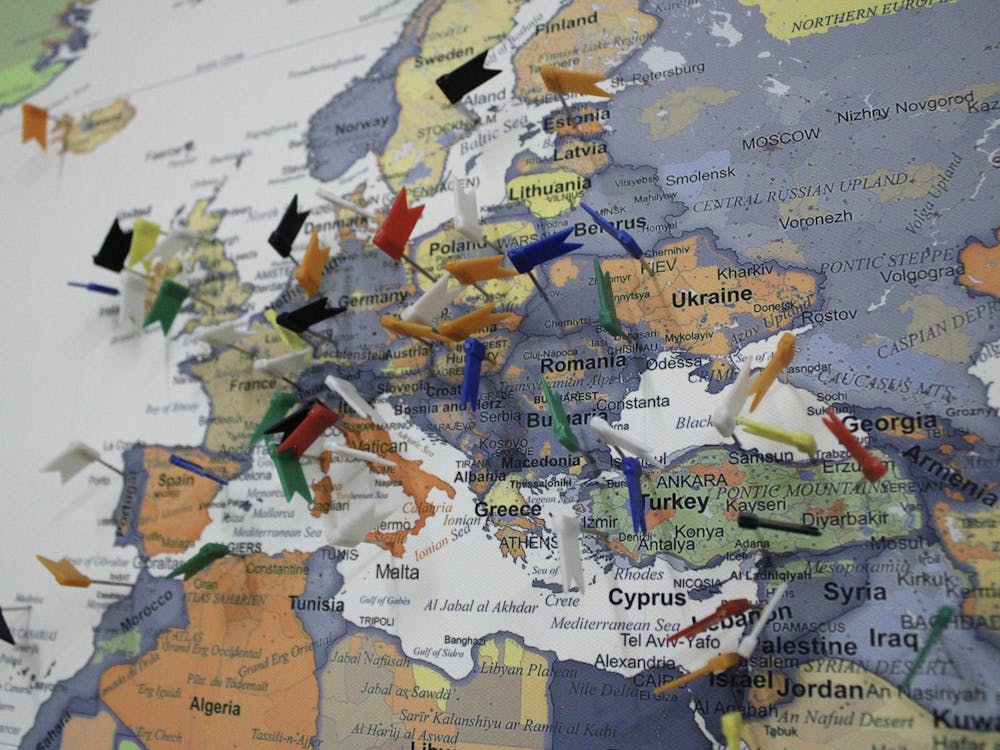THE FIVE-YEAR-OLDS in the Japanese classroom lean forward alertly as their teacher barks out multiplication tables. In the back of the room, one little boy pretends to yell out answers with the rest of the kids but does not actually know them since he just played outside yesterday and didn't study. When the teacher finds this out, she shakes her head sternly and assigns him 10 pages of extra long division homework to make up for his laziness. The little boy starts to cry.
This exaggeration that the Asian math system is an arithmetic boot camp is what American students, teachers and parents sometimes use to justify their own lax system. But this coddling may be why third graders in Taiwan outscored their third-grade Maryland challengers almost twofold in the 1998 Maryland School Performance Assessment Program. It's an explanation for why the average SAT math score is an impressive 610 in Japan compared with a piddling 460 in America.
A recent study found that this year, Eastern math techniques have been used in 28 percent of American elementary school classrooms. After straggling behind Singapore, Korea and Japan, America slowly is opening its bleary eyes to the reality that a liberal and touchy-feely education does not add up to a solid math performance. Instead, the disciplined and straightforward Asian system is more effective in training children.
Asian curriculums like the Kumon method have been popping up across the country for the past 10 years and today over 109,000 students in North America have been through the program. Kumon focuses on drills and learning math by rote memorization and practice. The levels move smoothly and uniformly from basic to more advanced math and the logical sequence allows students to jump around easily depending on their abilities.
As a small, arithmetically deficient child, my parents sent me off to Kumon, a bi-weekly after school program, armed with a pencil and a math phobia. The intensely silent atmosphere intimidated me, but I was grateful for the discipline it taught me. The only rule at Kumon was that if you got anything wrong on your homework, even one problem, you must go back and do a whole new assignment. While this firmness did prevent me from ever moving past Level C: Fractions and Decimals, it also instilled an understanding that in math, there is a right and a wrong answer. There is no gray area.
American critics of the system are throwing pebbles at a mountain, since their arguments are so forced and weak. Is it really so traumatic if the names in the occasional word problems are Minglei and Maila instead of Jimmy and Bobby? In The Washington Post, Keith Jones, the coordinator of Maryland's Montgomery County elementary math curriculum, says that it most certainly is. ("Looking East for Math Techniques," March 21.) Jones worries that students may stumble over the names and develop a complex that their own math aptitudes will never be up to the Asian par. But for all this psychological trauma is worth, if America doesn't dismount its high horse of education know-how, there will be worse trauma for its students when they are ousted out from a technology company by a superior Asian worker.
As products of the American math factory, we understand that the Western approach tends to be comforting but also confusing, holding students' hands with colorful and picture-laden textbooks that eagerly tell cynical kids how they can apply math to real life. However, the books are sometimes referred to as "MTV Math" because they are glossy and attention-grabbing but forget to actually teach kids the math. Ideas are disconnected, drills rarely are emphasized, and when it comes down to comparing students across the country, there is no uniform standard that is expected for each age.
This may be the result of the "new math" wave of elementary math reform that has washed over America. Developed by the National Council of Teachers of Mathematics, new math emphasizes open-ended debate over math: reasoning out loud and letting students convince each other of the answers. According to the NCTM, schools should "shrug off their long-standing preoccupation with computation and other traditional skills." ("Numbers Racket," Wall Street Journal, Feb. 6.) It is no longer crucial, the NCTM suggests, for students to be able to add, subtract, multiply and divide. Giving such "computational algorithms" over to calculators would free students to become "active participants in creating knowledge."
In reality, new math is one step away from being a therapy/support group in which students sit in a teary circle and discuss how math makes them feel. Students need teachers to teach them, not each other. Do boxers learn together, or with a trainer? Does a bird learn to fly because he watches his brother or because his mom pushes him out of the nest?
For all the gentle back patting we give our kids, when it comes down to it this only equates with worse performance. The Asian system doesn't add harshness -- it subtracts leniency. So if you really want to give kids confidence, boost their skills so that their superior scores can speak for themselves.






